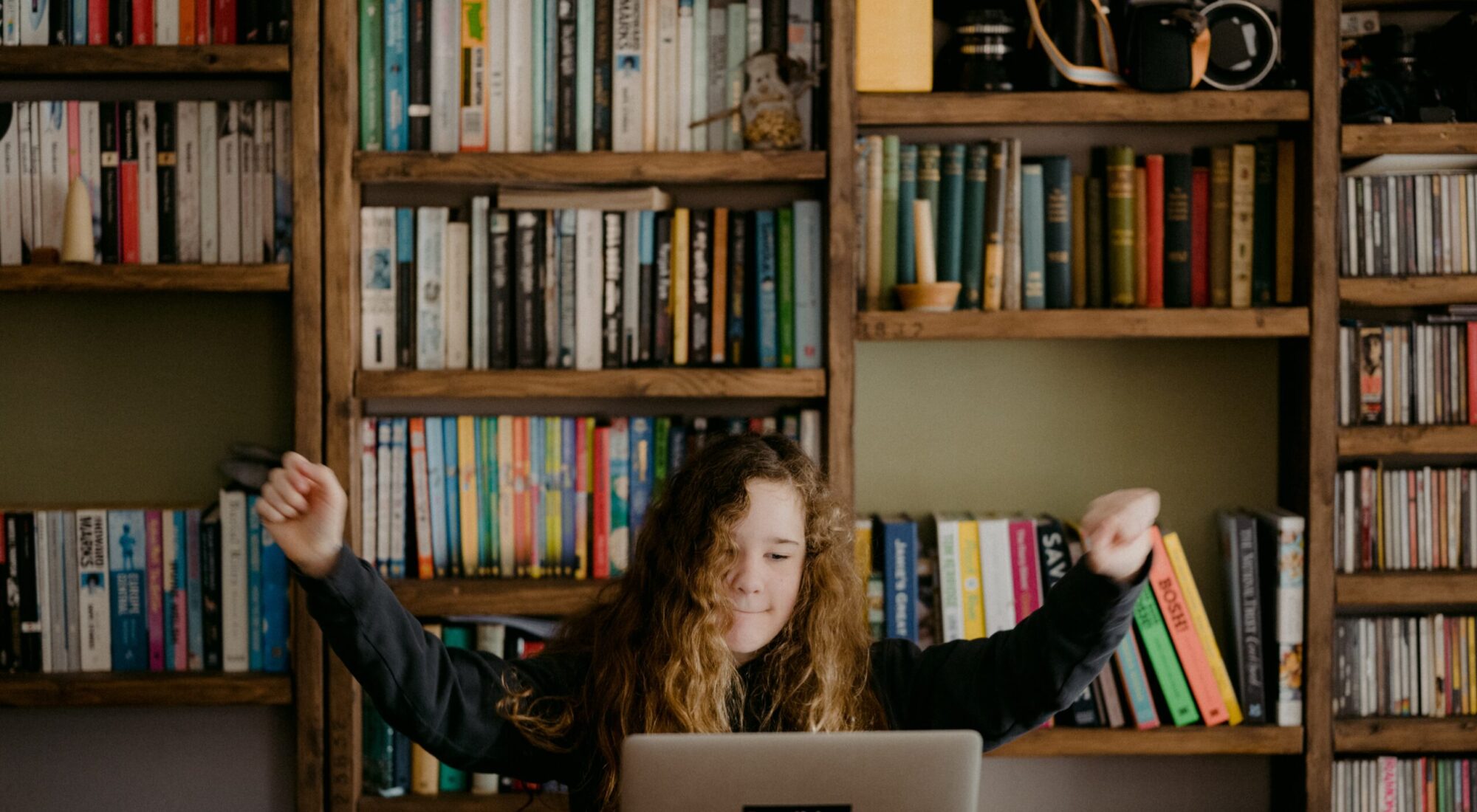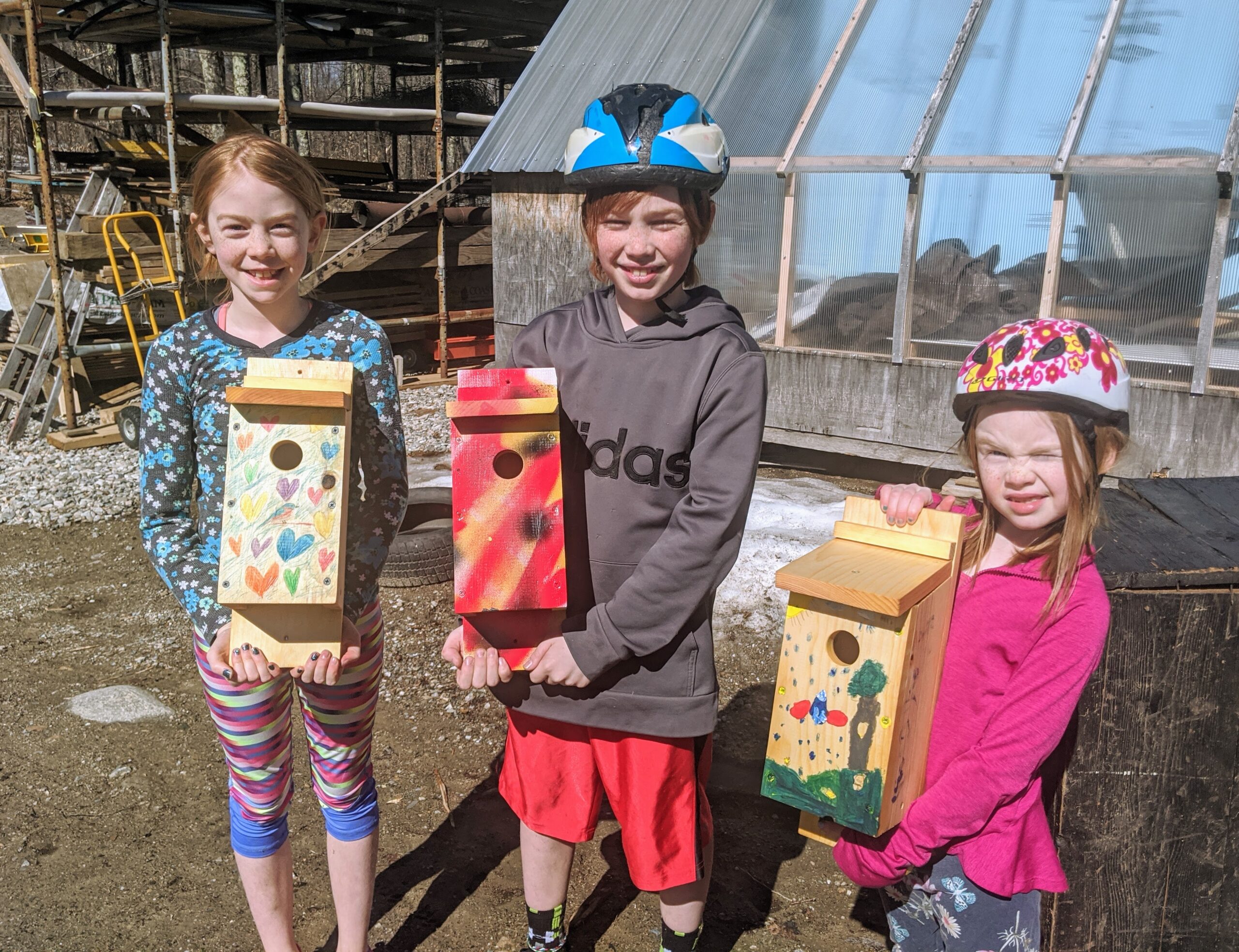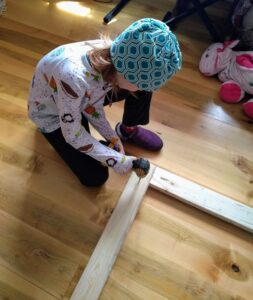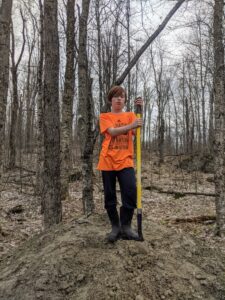It all started with a pandemic
Dear reader, as you are well aware, back in March a global pandemic struck and in-person schooling was suspended for the remainder of the school year. Quite suddenly, my family, like many, found ourselves home together all day, every day. My kids, also like many, thrive on routine. When we realized we would be spending All The Time together, we quickly built a family “home school” schedule.
This was in that in-between period before remote schooling had begun in earnest. We designed a schedule that had our three kids rotating through hands-on work, learning apps, and ….(drumroll)….project time. While I continue to work full time, my husband took over all things kids and schooling. My husband is a carpenter. This means that project time is also known as building-cool-stuff-with-dad time. Like birdhouses… or a playhouse… or a mountain bike pump track… or a new bedroom.
Wait a minute, I thought, this would make an excellent PBL project!
As my kids and their dad set about planning out each kid’s dream project (see: playhouse, pump track, and new bedroom), I immediately thought of the math! The physics! The ecology! The design thinking! And the skills: Self-direction! Project management! Critical thinking! Problem-solving! Perseverance! Collaboration!
The kids could take pictures, write reflections, and make a mini-documentary telling the stories of their projects. This is personalized learning at its best, right? These are Passion Projects! And this would be the perfect content for my students’ — ahem, I mean, my children’s — PLPs.
I gleefully invited the kids to begin thinking about how they could document their projects and learning.
Unfortunately, I was met with eyerolls and groans.
Somehow it seems that they’re not all that excited about “school-ifying” their projects.
As an educator, I can’t ignore the myriad learning opportunities these projects offer. But my learners aren’t playing. This is real life, they crow. Why do we need to write about it? they plead.
Right now, the lines between school-and-home and teacher-and-parent are blurred. I need to think about this.
We interrupt this blog post for a few words from John Dewey:
That Dewey guy, fellow Vermonter? He was pretty brilliant when it came to education. (For the record, so was his wife Alice, whose career as an educator provided Dewey much of the fodder for his astute observations and Pedagogic Creed.) His more famous quotes often rattle around in my head at pivotal moments. Here are a few that have been circling my thoughts lately:
“I believe that education… is a process of living and not a preparation for future living.”
Education is life.
And that couldn’t be more true as we plant seeds, make bread, and learn the names of the spring plants emerging in the forest.
“We don’t learn from experience…we learn from reflecting on experience.”
And reflection is where we make meaning. Just like savasana following a yoga practice lets all the good sink in and lets our bodies integrate all that work, we need to pause after these rich learning experiences.
We need to evaluate and write our mental note-to-self.
To let our experience sink in.
If Dewey is right (and I believe he is) it is both these real-world pandemic projects and the process of reflecting on them that is The Real Thing. Our Aim in Education.
But how can I help my kids reap the benefits of these learning experiences without the eyerolls and groans? (Read: suffering for children and parents alike.)
Striking a balance
I remember in high school English class how I would lament that I just wanted to read the book and enjoy it, not pick it apart into such fine detail that it loses its appeal. I remember how I assigned my students to complete reading logs, documenting minutes and pages read. Arguably these both killed some of the joy of the experiences.
Yet, I’ve been actively involved in book clubs for the past 20 years, where I show up so that I can discuss books (and yes, eat cheese and sip beverages). And I now keep track of my own reading on the Goodreads app. I love seeing my collection of books grow, and the satisfaction of reaching my reading goals.
So what’s the difference?
How do I make sense of my adult behaviors in the context of my schooling experiences? Why now do I deeply enjoy something that I resisted as a student? There are probably many answers, but one stands out: without having become proficient at the skills necessary for these behaviors (decoding and meaning-making! literary analysis! goal setting!) I probably wouldn’t engage in them as an adult.
Similarly, our kids need to develop essential skills.
And developing these skills takes practice. Take perseverance, for example, the stick-with-it-ness that allows us to meet even the most challenging tasks with success. Based on my recent observations, my kid isn’t likely to learn perseverance by practicing his multiplication tables or emptying the dishwasher.
So is there a way to get there without as much resistance?
Based on this kid’s new-found passion for his bike and his drive to build a pump track, he just might learn it with a shovel.
And this is the promise of personalized learning.
When we give kids a choice of what to do, and when it’s something they love (or like; like is good enough) they can develop the skills they need to succeed, driven by their own interests. They can work toward developing proficiency in a wide array of skills while engaged in an activity that captures their imagination and interest.
When this happens, our role shifts.
Questions, questions, and more questions
So maybe I’ve figured out my pandemic project problem. My kids already have passion projects underway. Education = life, check! And ok, as a mom, maybe it doesn’t make sense to assign actual documentation and reflection in a PLP (though as a teacher it sure would).
But it does make sense to slow them down, ask them questions, and help them plan and reflect. This will balance my Deweian-experience-and-reflection equation.
Here’s what I’m thinking:
Before work
My role before the kids get started is to help them make a plan and get organized and to anticipate and plan for challenges. A few of these questions would do:
- What are you going to do today?
- How long do you think it will take?
- What materials do you need?
- What do you think will be the hardest part?
- How might you handle it if that happens?
During work
For the most part, when things are going well, they need little intervention. But when they get frustrated, or when we see things going off track, a little redirection can nudge things back in the right direction.
- How can I help?
- What do you need to do next?
- What do you think will happen if you do that?
- How are you feeling? Do you think it would help if you took a break?
After work
When work is done (for the hour, for the day, or the project is complete), we can hold the space for reflection.
- What went well?
- What didn’t go well?
- Next time, what would you do differently?
- How do you feel?
- How did you solve the problem?
- What are you most proud of?
- What is your next step for next time?
I can notice, aloud, how they located the information they needed or worked together successfully, or how they worked hard to achieve their goal even though they were tired/frustrated/hungry. I can celebrate their success with them.
Also, please notice that these aren’t leading questions. (Like: what will you do after you make a mess? What will happen if you don’t? Do you really think that’s a good idea? Just what do you think you’re doing, mister!?) And they aren’t statements, either. They are generous, curious, scaffolding questions.
By asking questions I’m engaging their brains in problem-solving. I’m asking them to figure it out, perhaps with a little support.
Considering the questions is more important than having the answers
Here’s the truth: even when I ask my kids these questions they often don’t have the answers. There might be an IDK. But in just considering the questions we are helping them build the neural pathways for planning and reflection in their brains. Just like it can take up to 40 experiences with food before a child decides they like it, it can also take numerous iterations of
- “What’s your first step?”
- “What went well?”
- “Next time, what would you do differently?”
to build those connections and insight.
But soon they’ll have an answer, and eventually, they’ll be able to ask themselves the questions.
And once they have those skills (and they’ll know they have those skills because they’ve noticed and reflected on them) they will be able to call on them in the moments when the content of their task is less appealing.
We may need to remind them of this, too.
Note-to-self:
So after reflection (hey, thanks for reading) I think I know how to solve this learning documentation conundrum. Now, in this pandemic spring, I will urge my children to continue their projects.
And I will ask them questions. (Lots of questions.)
And that will be enough.
In case it’s helpful: Super Sisters Academy schedule and project sheet





What a wonderful journey! Your family’s “home school” schedule is truly inspiring. It’s amazing to see how you turned an unexpected situation into a creative learning opportunity, especially with your husband’s skills as a carpenter. Building birdhouses, playhouses, and even a mountain bike pump track must have been such a fulfilling experience for your kids. Looking forward to hearing more about your project-based learning adventures